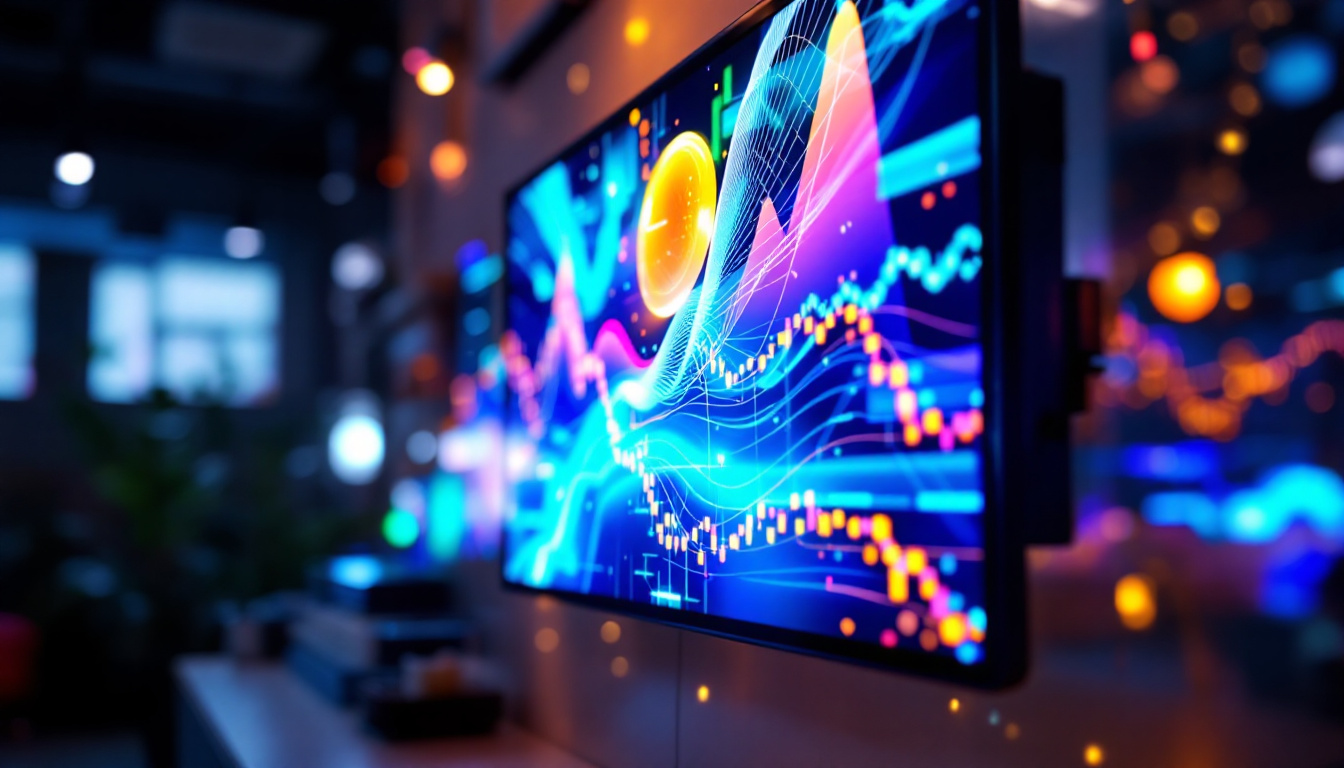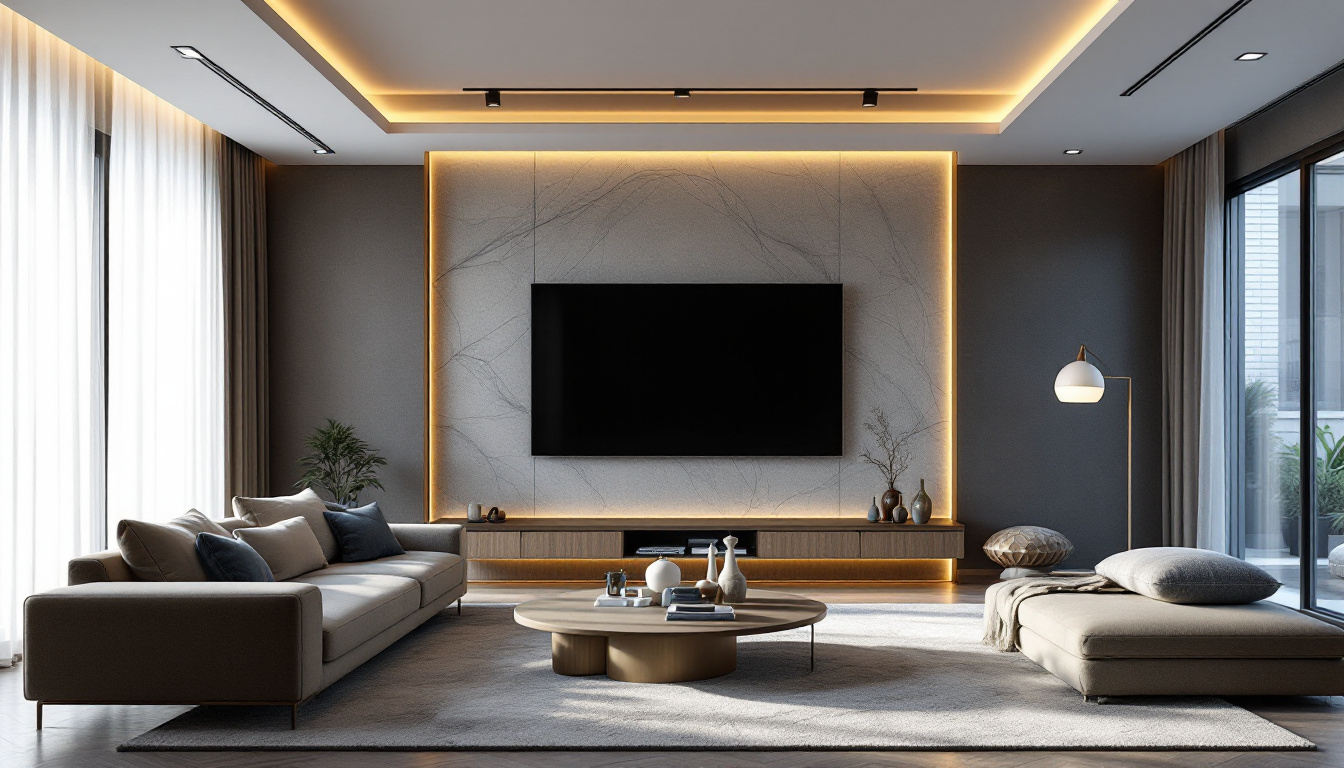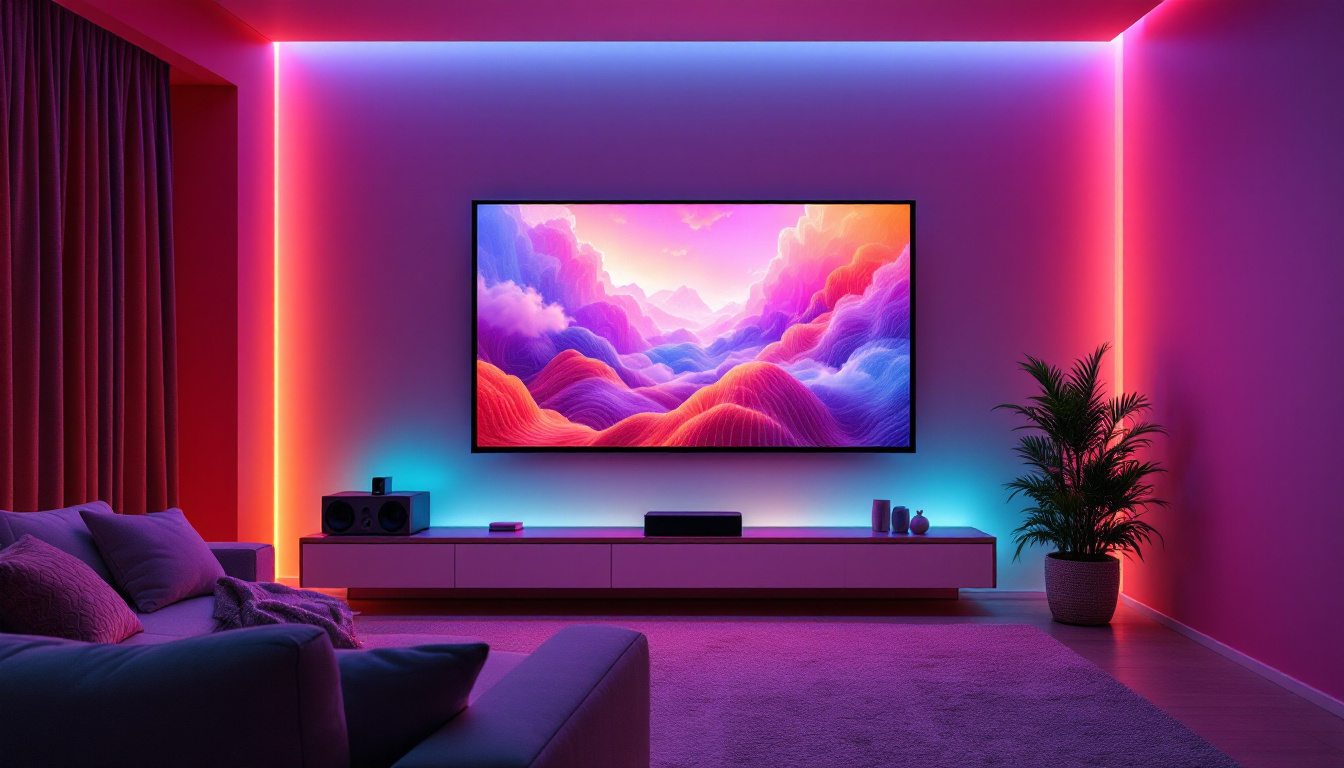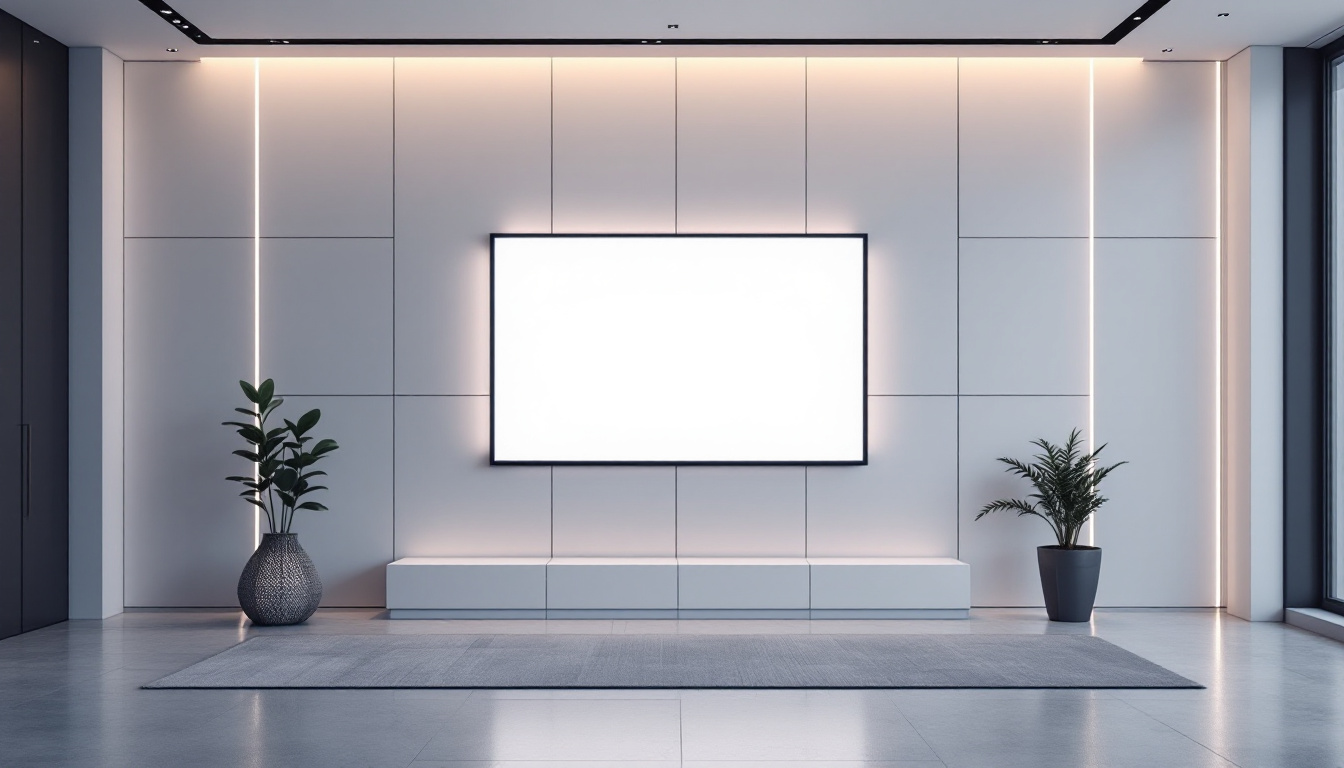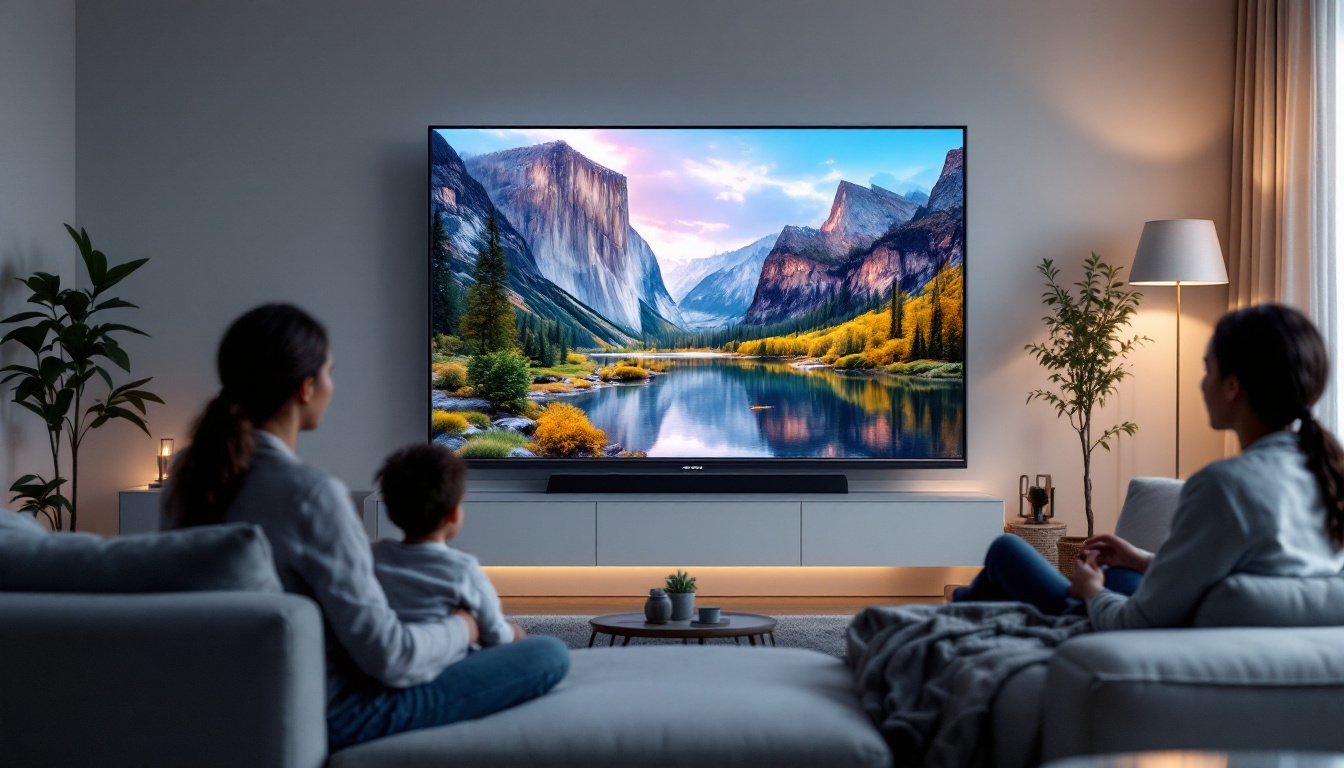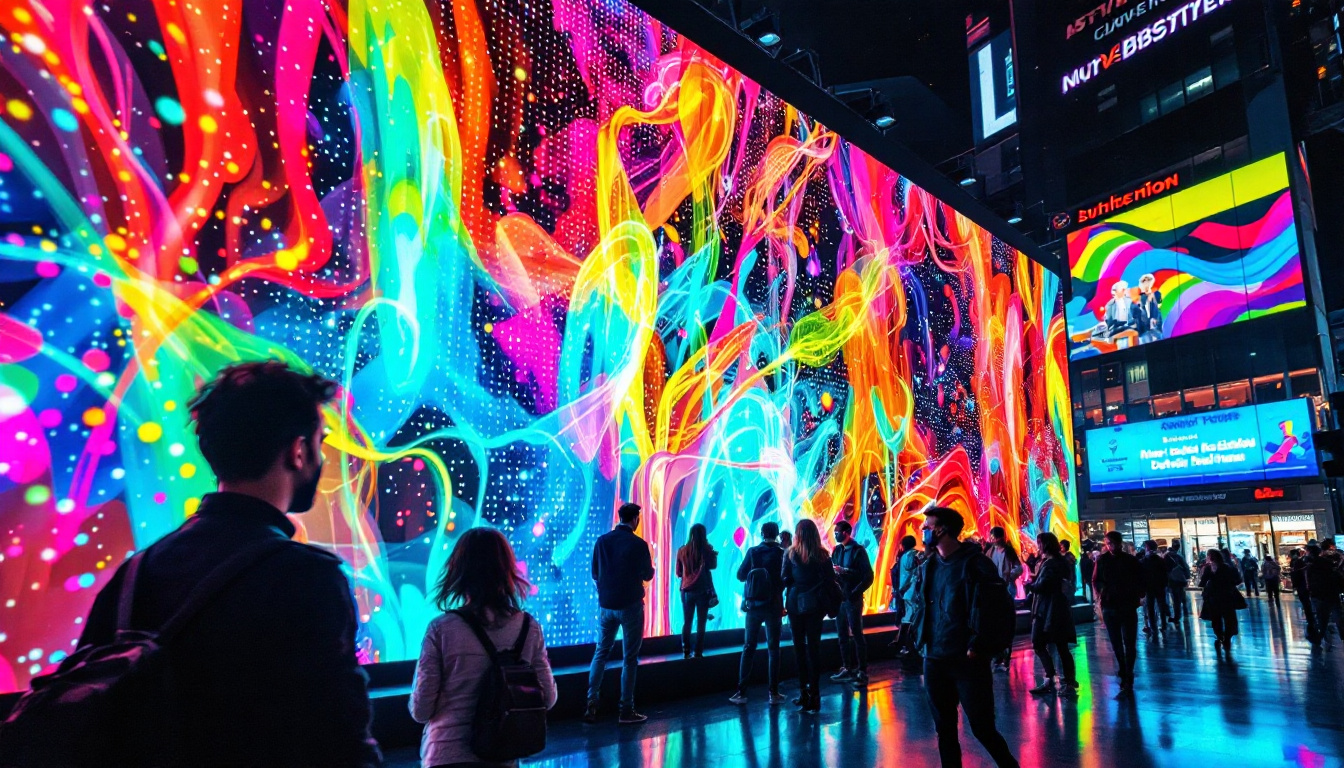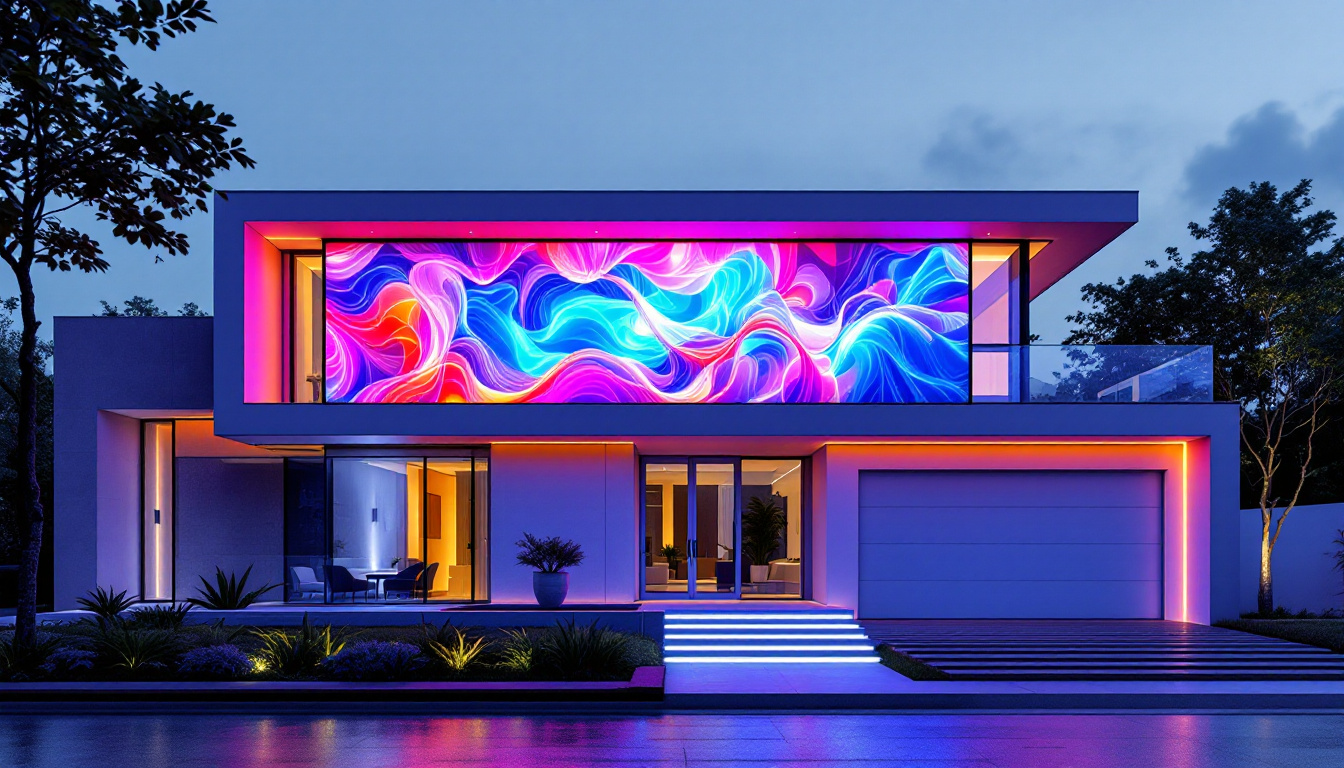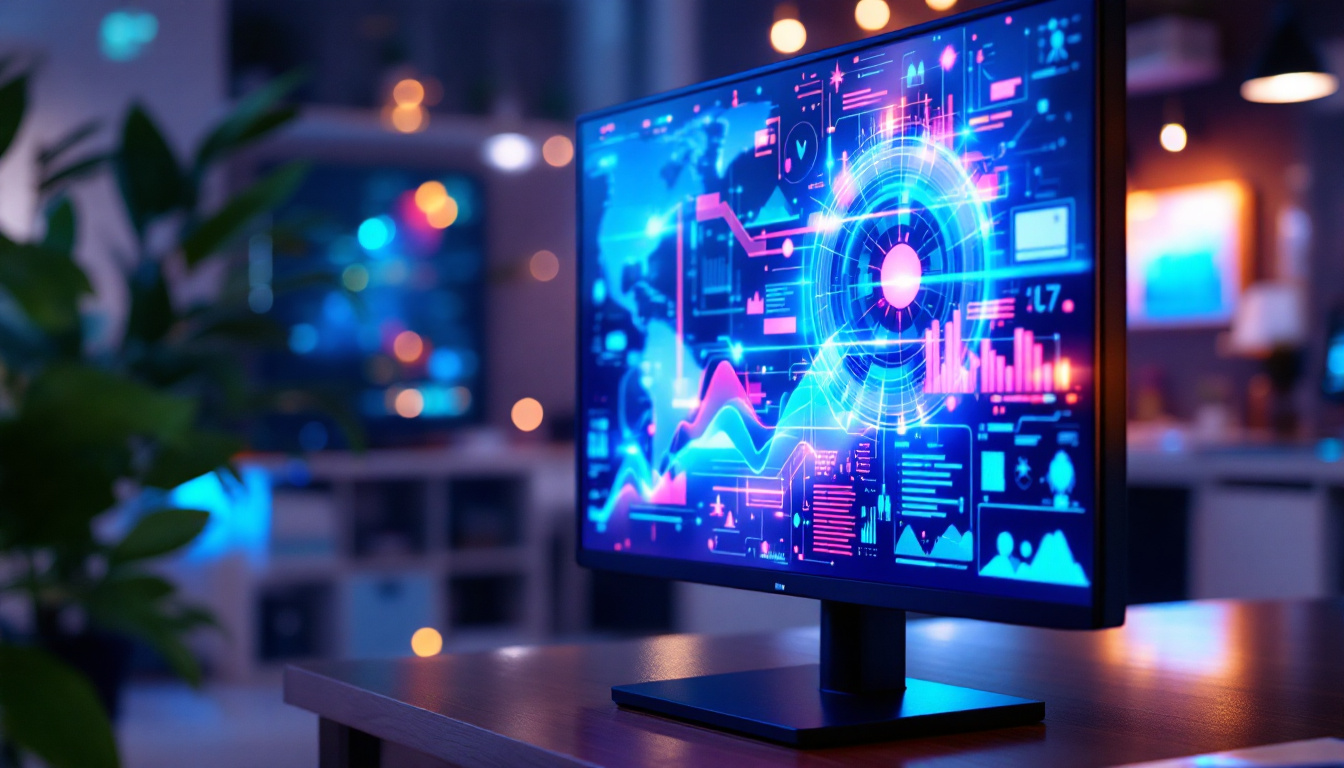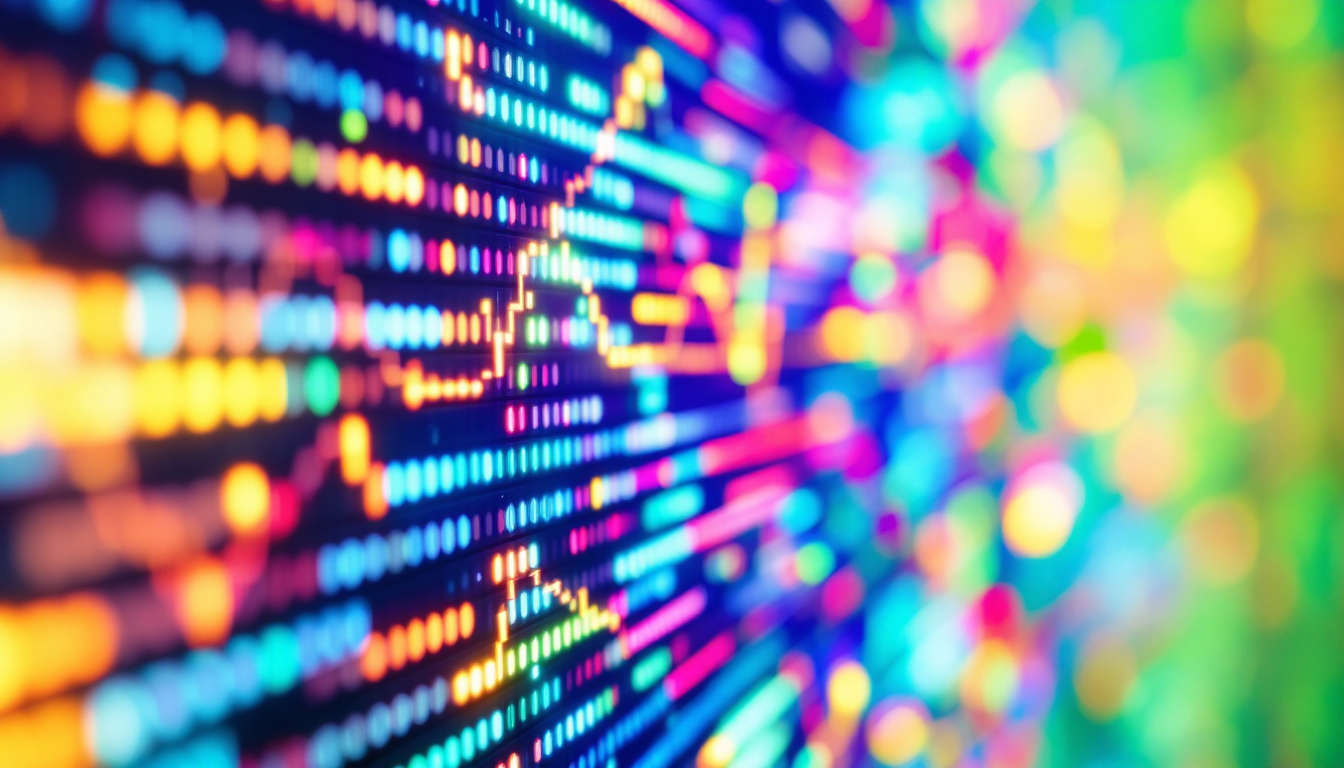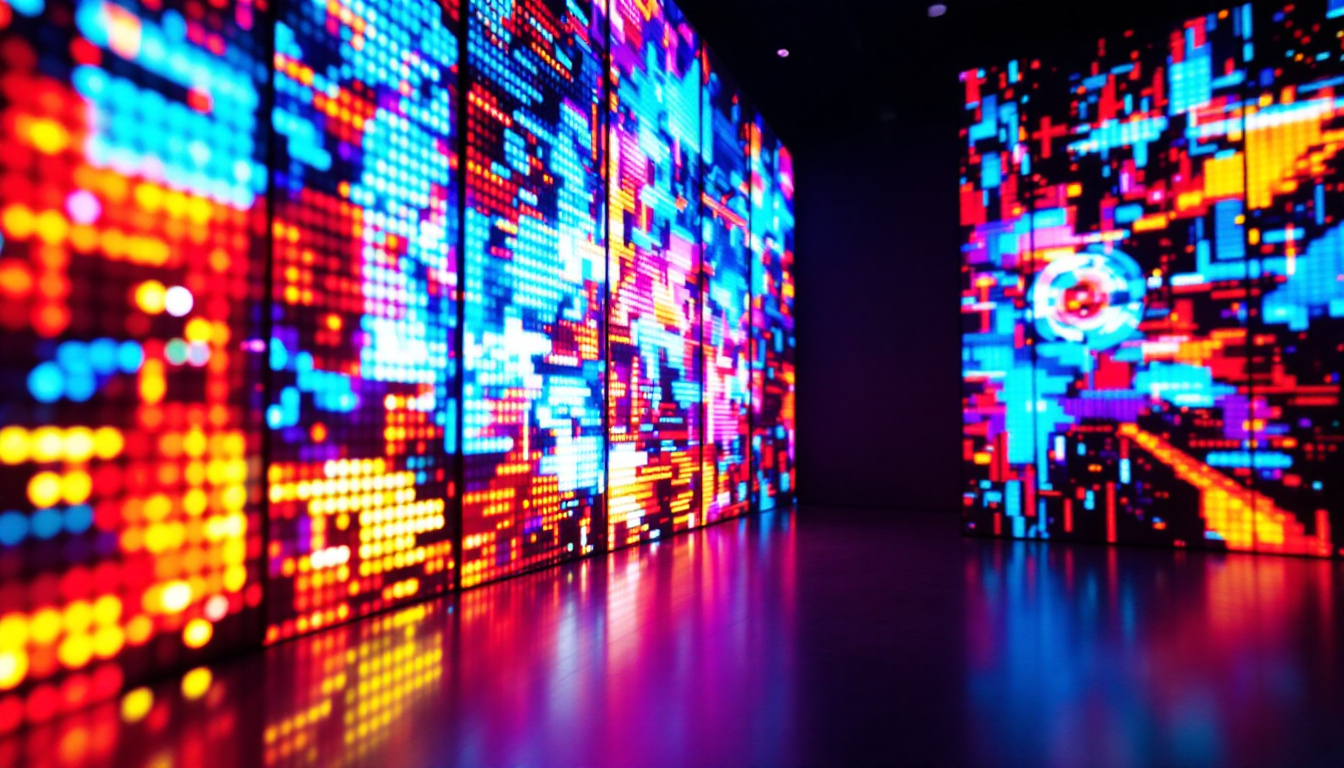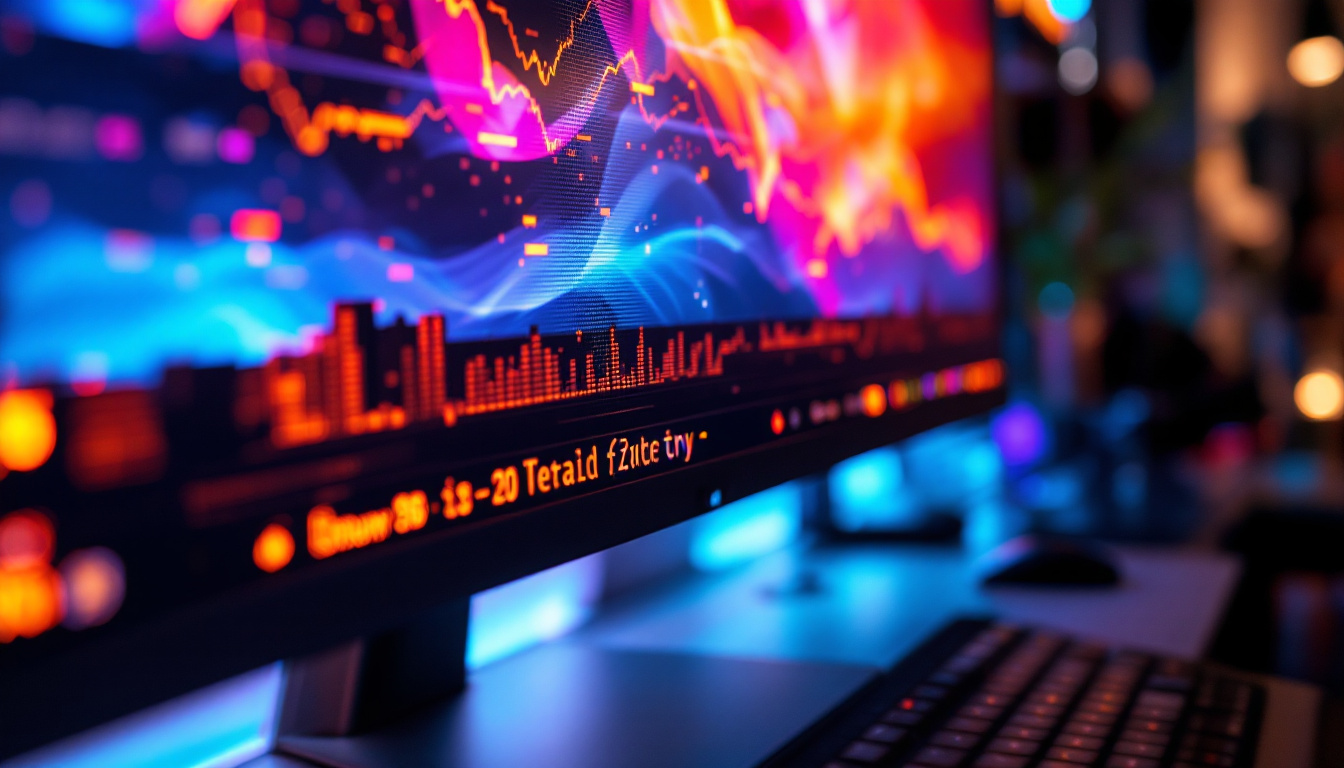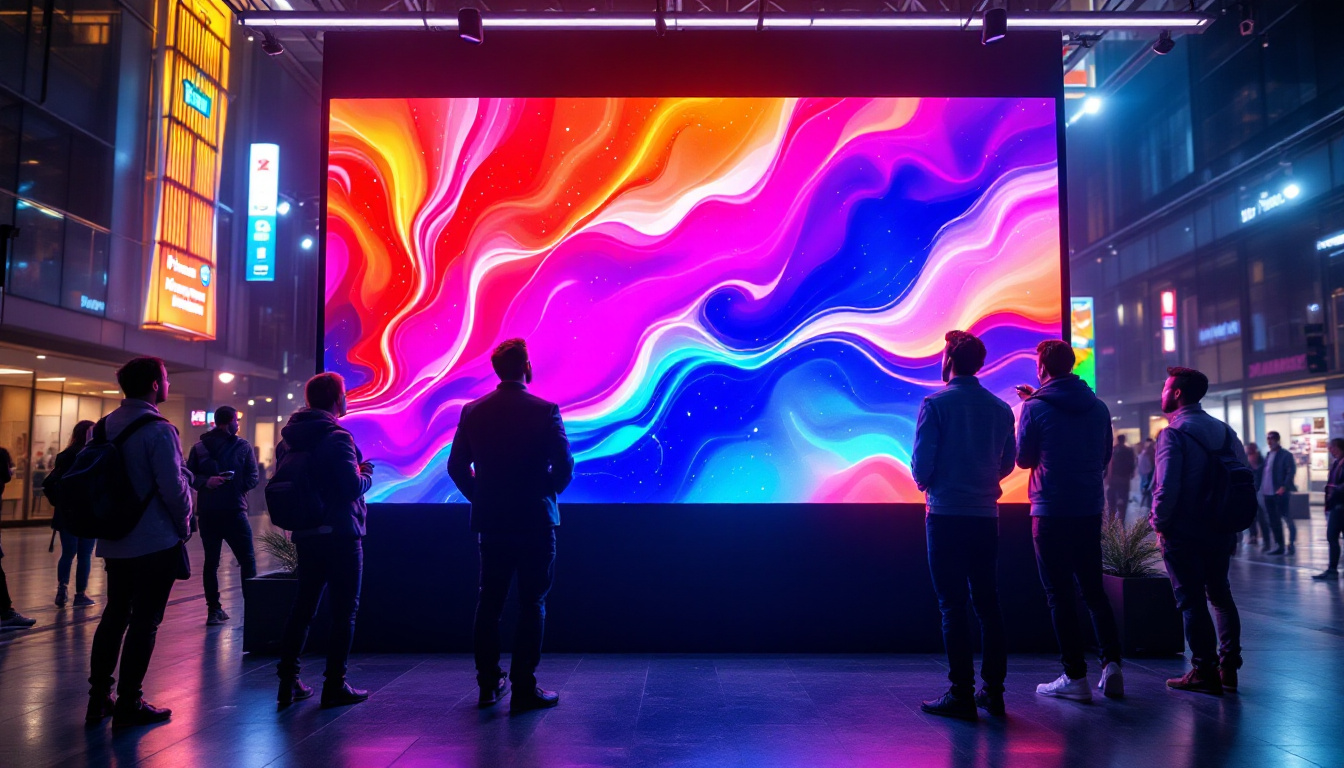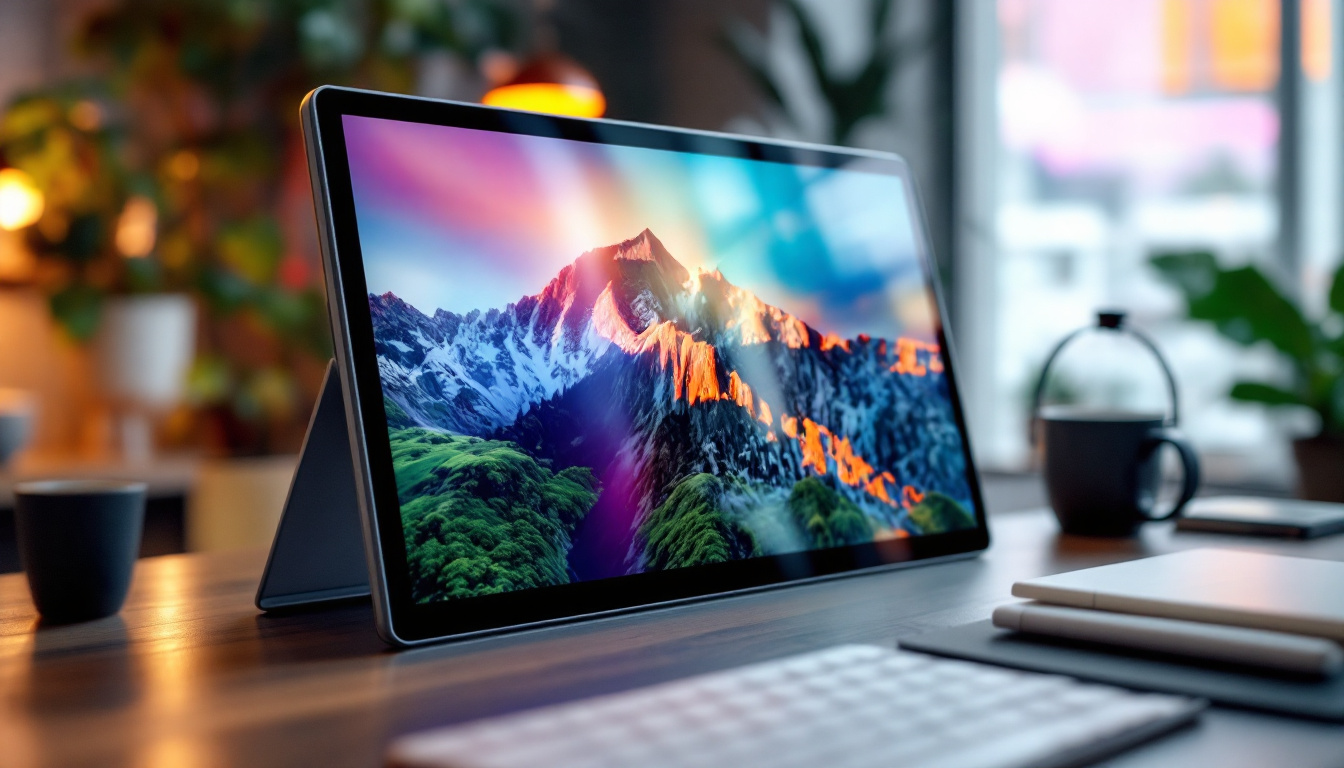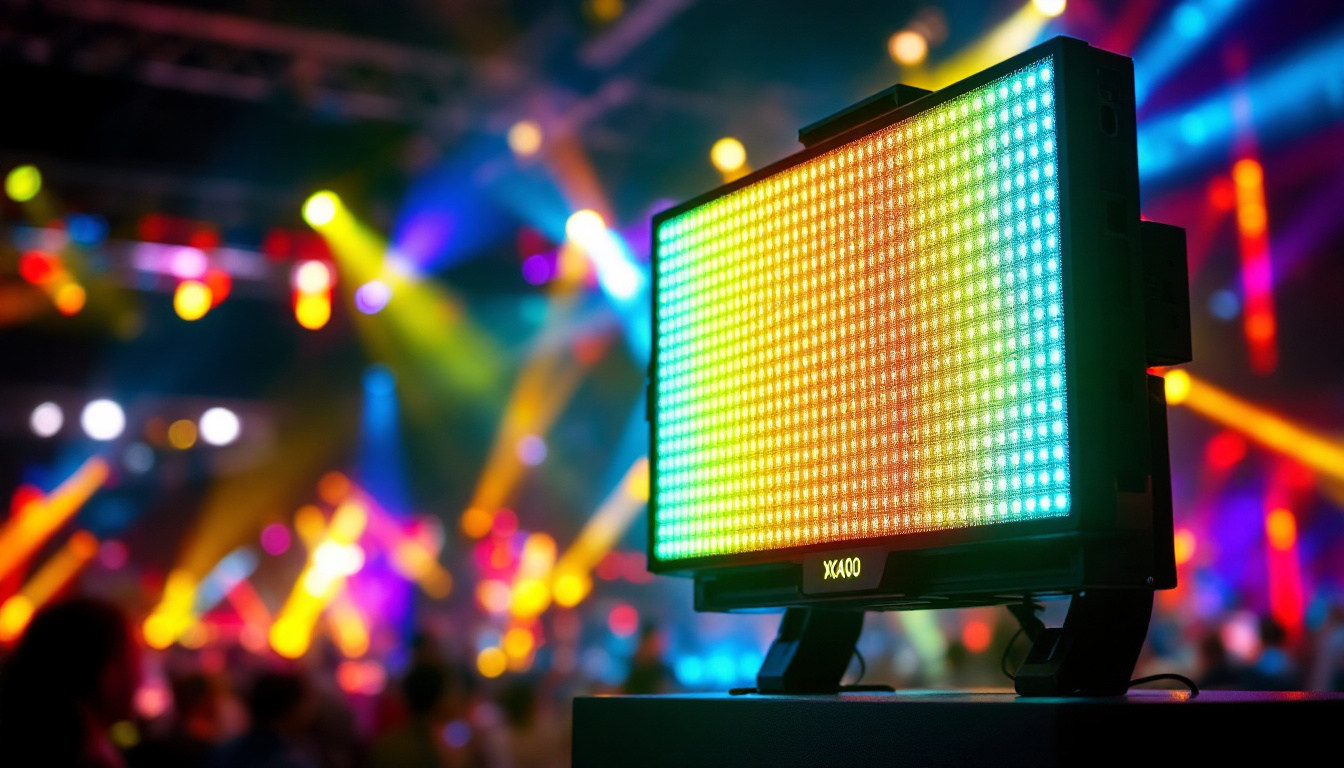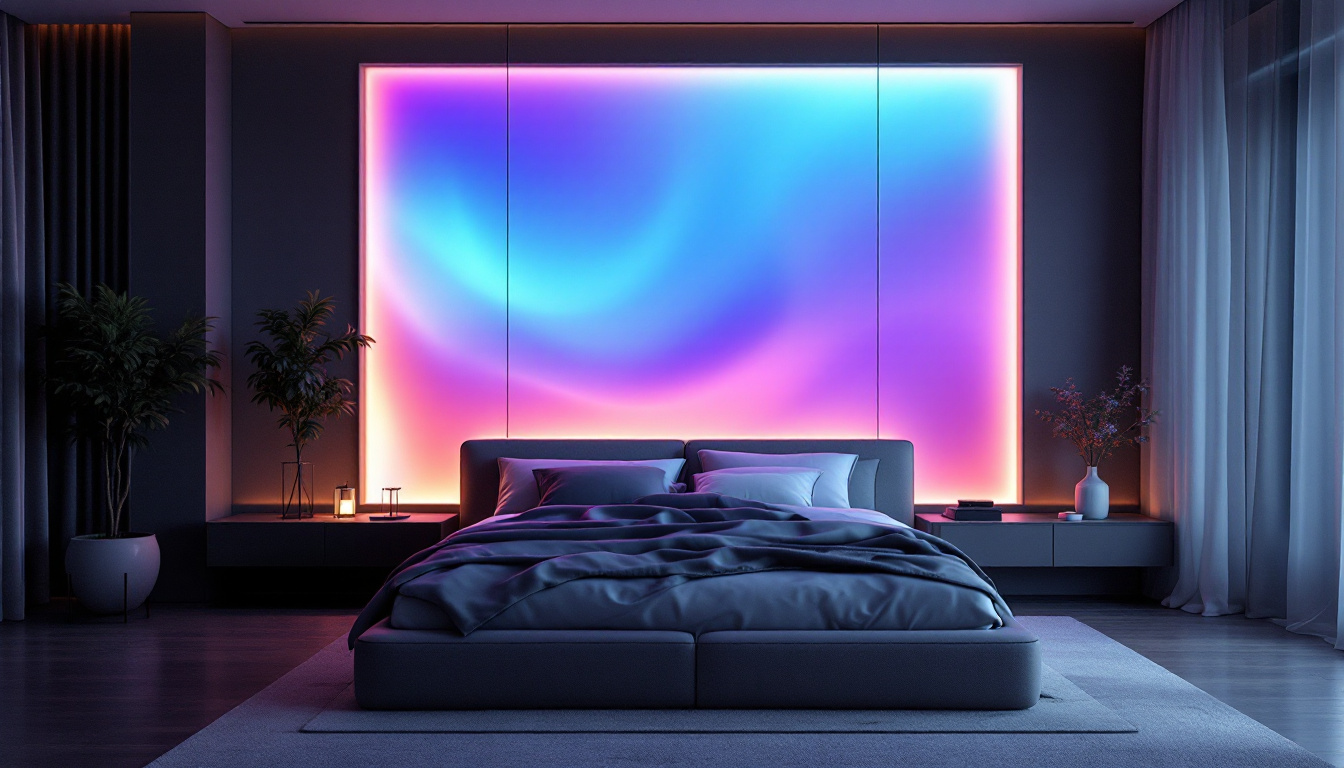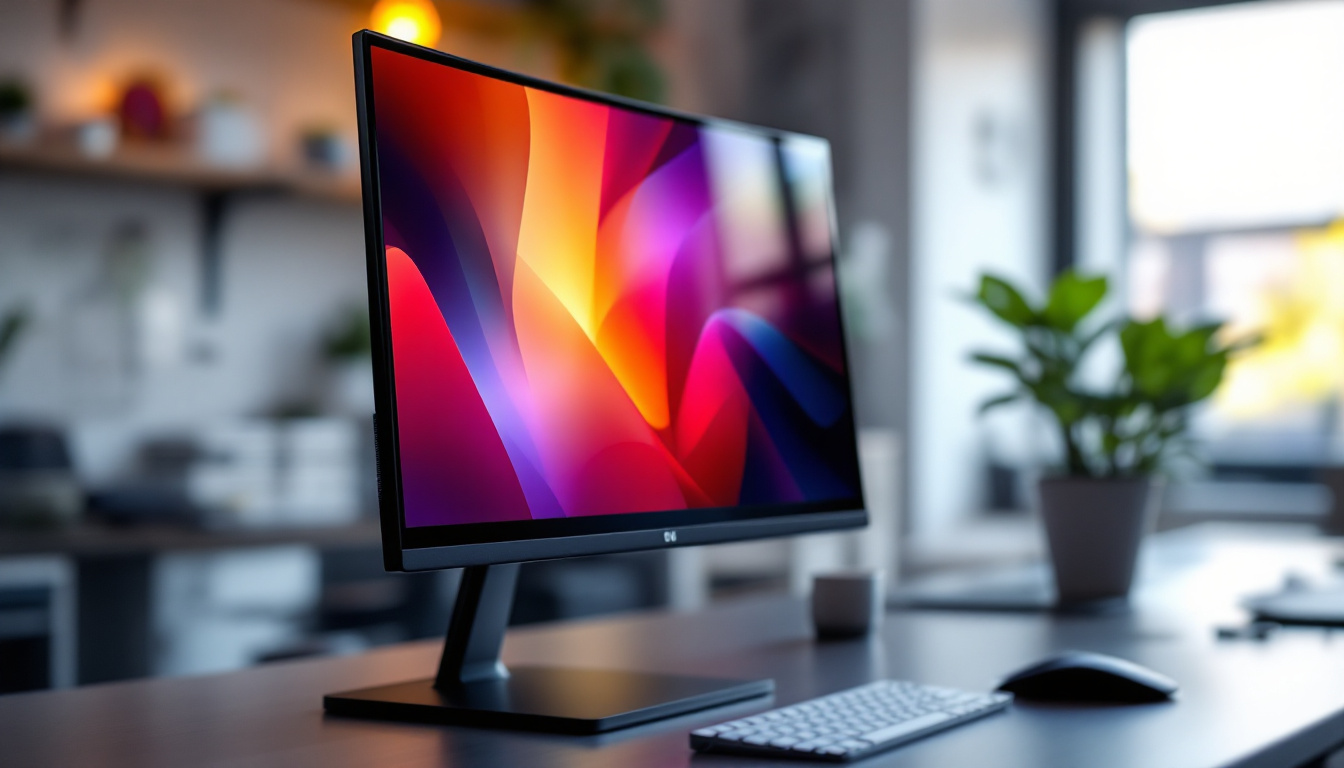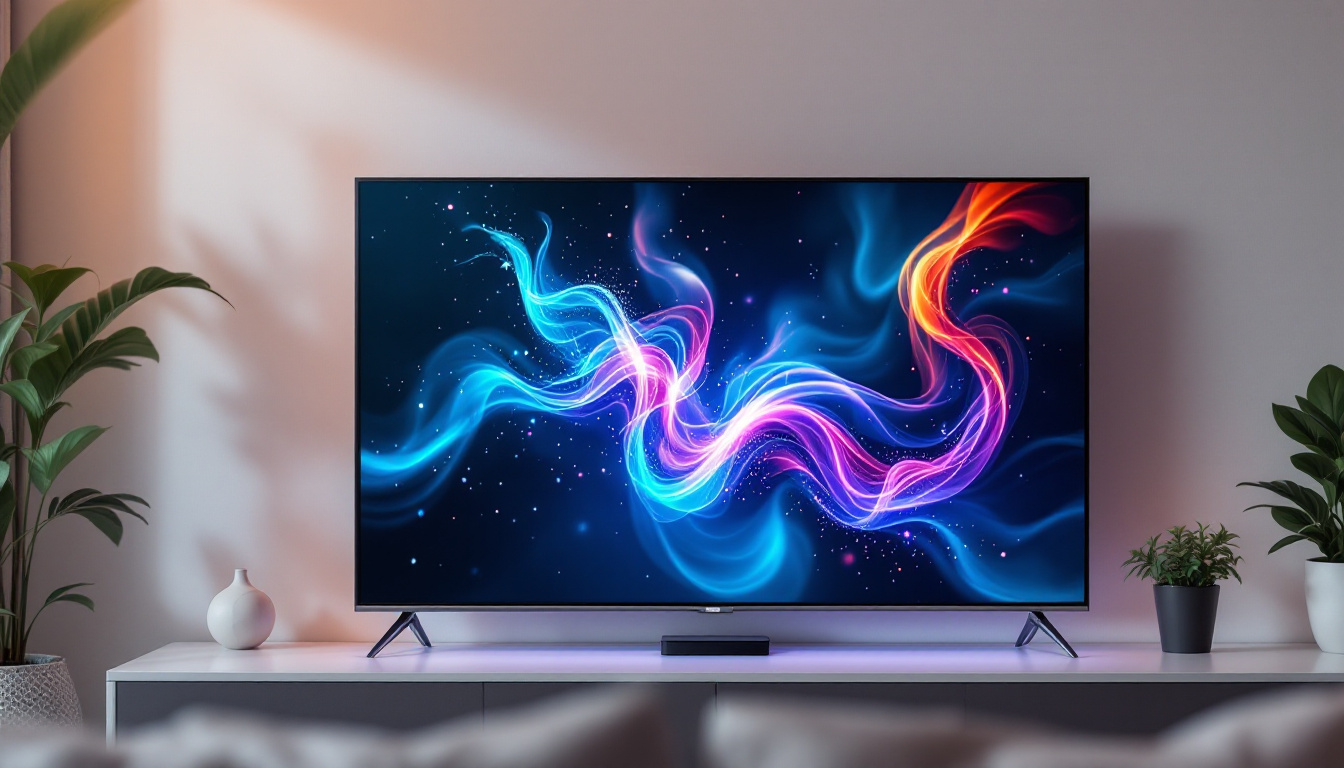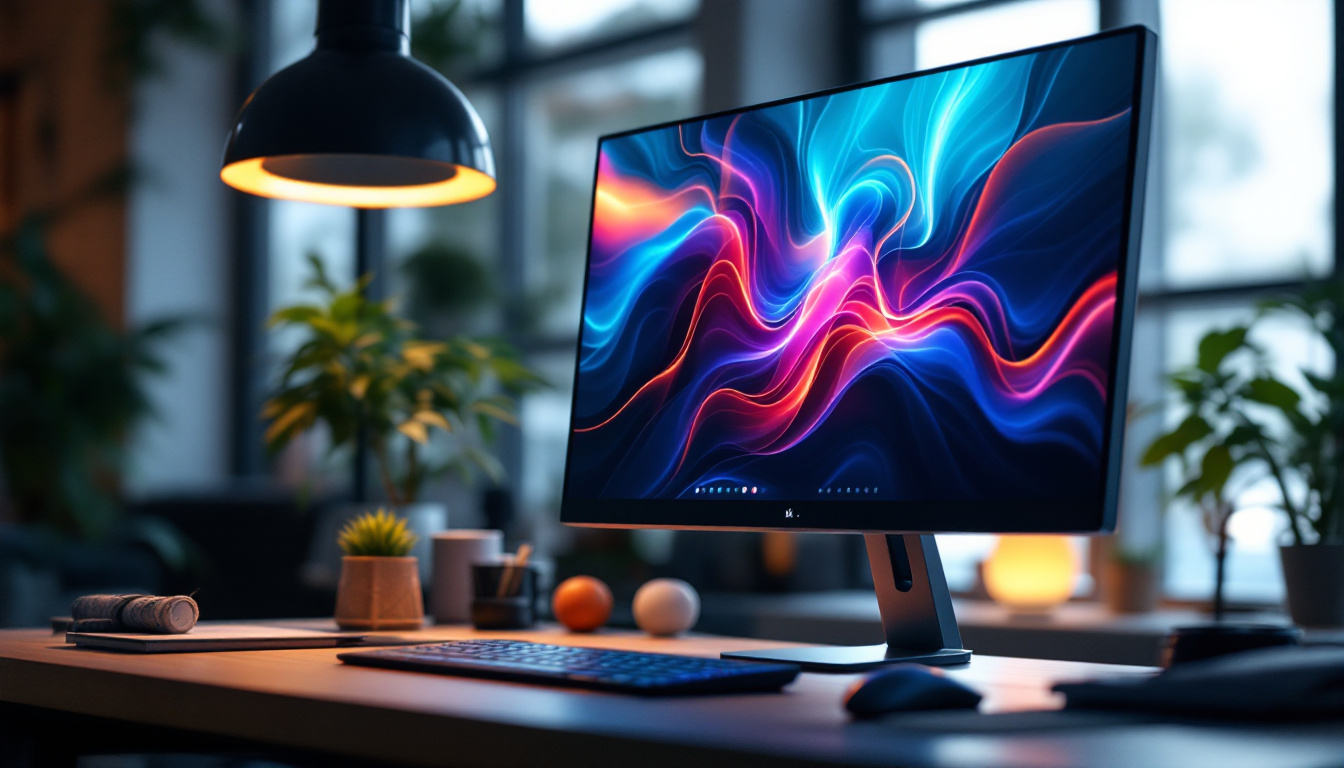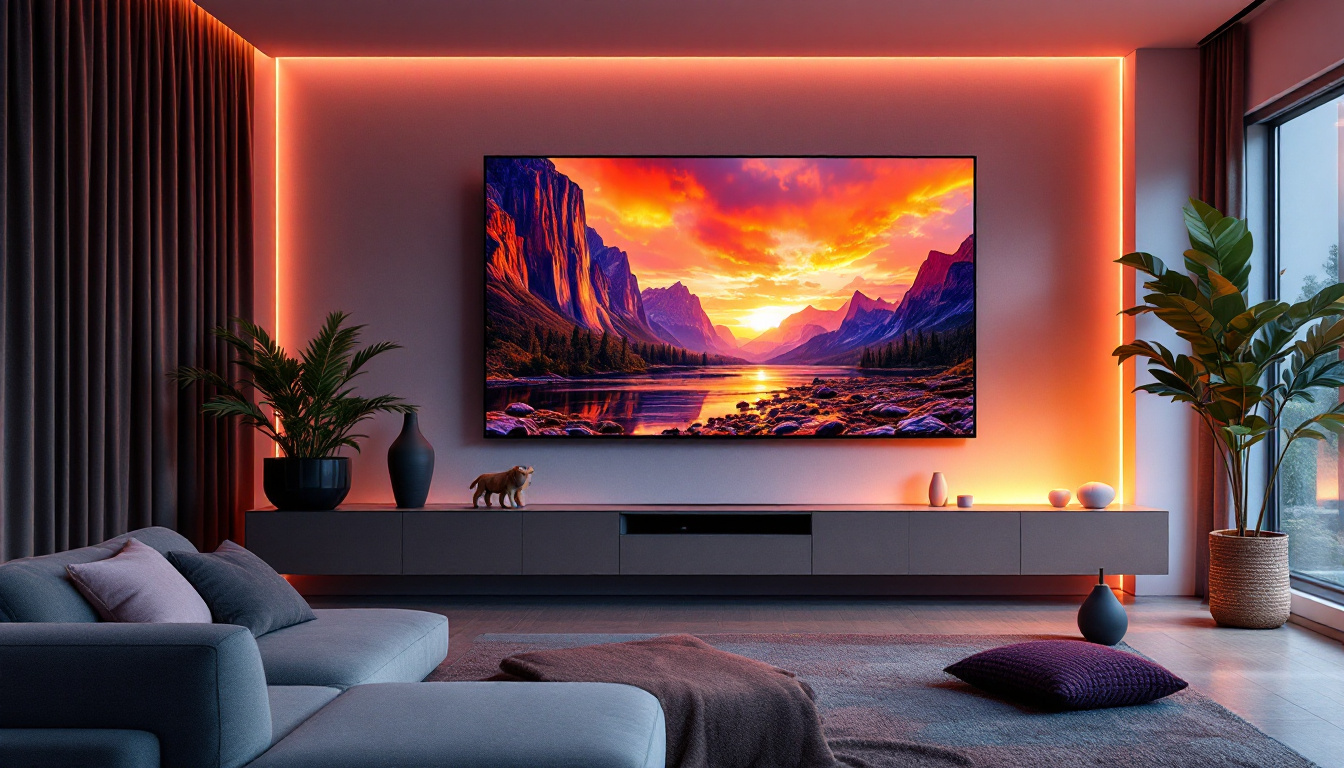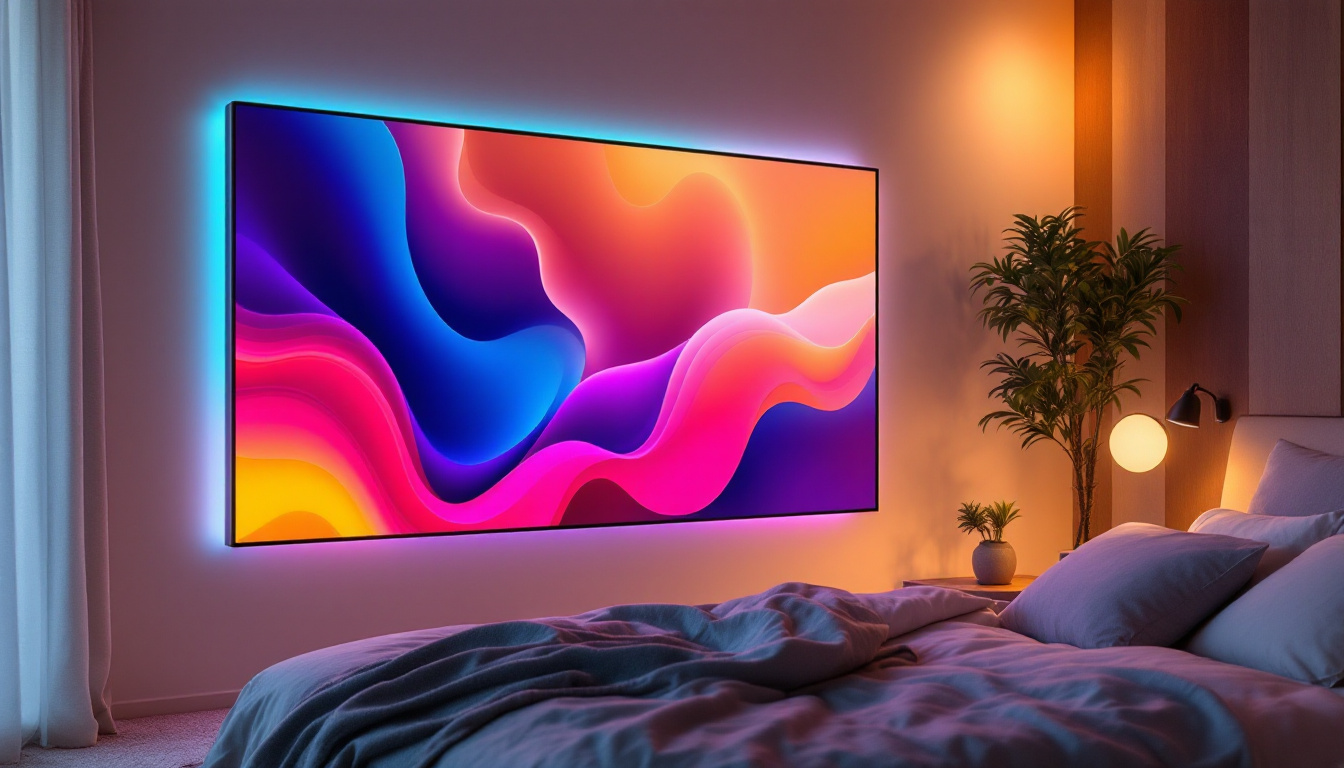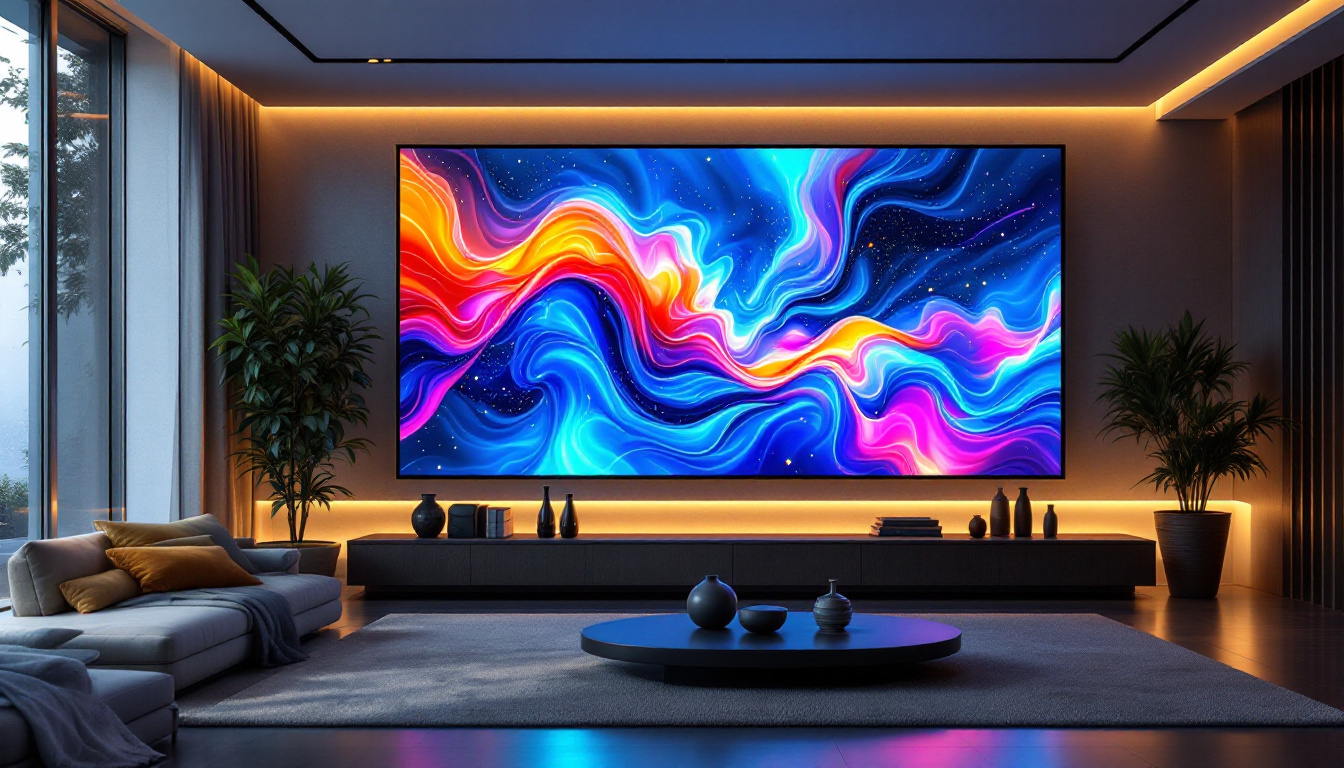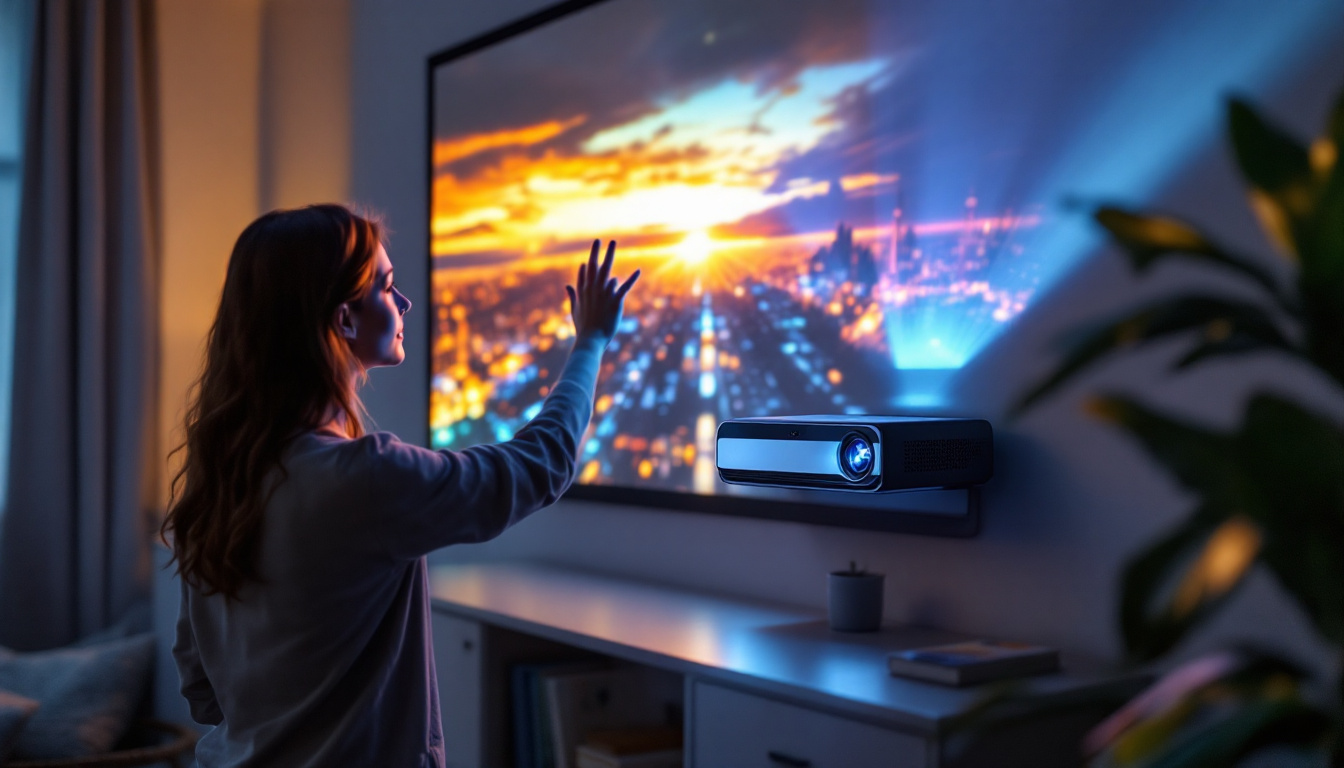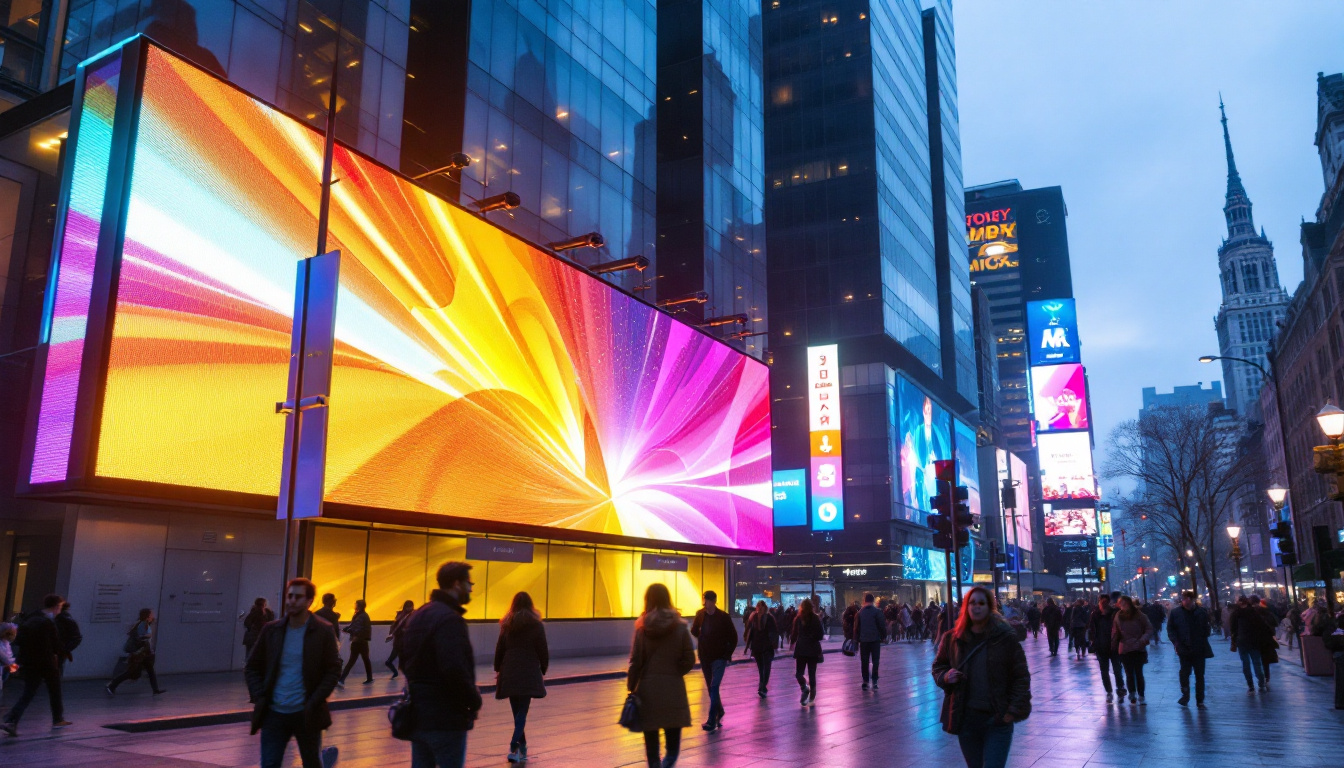In recent years, the world of display technology has witnessed remarkable advancements, particularly with the introduction of flexible screen displays. These innovative displays, often based on LED technology, are revolutionizing how information is presented across various industries. This article delves into the intricacies of flexible screen displays, exploring their construction, applications, and the future they promise.
Understanding LED Technology
At the core of flexible screen displays lies LED (Light Emitting Diode) technology. LEDs are semiconductor devices that emit light when an electric current passes through them. This technology has become the backbone of modern displays due to its efficiency, brightness, and versatility.
The Basics of LED Functionality
LEDs function by electroluminescence, where the movement of electrons within the semiconductor material generates photons, producing light. This process is highly efficient, consuming significantly less power than traditional incandescent bulbs. This efficiency not only reduces energy costs but also contributes to a lower carbon footprint. Furthermore, the compact size of LEDs allows for innovative designs, enabling manufacturers to create displays that are not only functional but also aesthetically pleasing.
Types of LED Displays
There are several types of LED displays, including OLED (Organic LED), MicroLED, and MiniLED. Each type offers unique advantages and is suited for different applications. For instance, OLED displays are known for their deep blacks and vibrant colors, making them ideal for high-end televisions and smartphones. On the other hand, MicroLED technology provides exceptional brightness and longevity, making it suitable for large-scale installations. Additionally, MiniLED technology, which utilizes smaller LED chips, enhances contrast and improves local dimming capabilities, resulting in a more immersive viewing experience, particularly in HDR (High Dynamic Range) content.
Advantages of LED Displays
LED displays offer numerous benefits, including high brightness levels, energy efficiency, and the ability to produce a wide color gamut. They are also lightweight and thin, facilitating flexible designs. Additionally, LED technology boasts a longer lifespan compared to traditional display technologies, reducing the frequency of replacements and maintenance costs. The durability of LED displays is another significant advantage; they are less prone to damage from impact or environmental factors, making them suitable for both indoor and outdoor applications. This resilience is particularly important for digital signage and advertising, where displays are often exposed to varying weather conditions and require consistent performance.
Moreover, the rapid advancements in LED technology have led to the development of smart displays that integrate seamlessly with digital ecosystems. These smart LED displays can connect to the internet, allowing for real-time updates and content management. This feature is particularly beneficial for businesses that rely on dynamic advertising strategies, as they can easily change messages based on audience engagement or time of day. As LED technology continues to evolve, we can expect even more innovative applications that will further enhance our visual experiences across various industries.
The Emergence of Flexible Displays
Flexible displays represent a significant leap in display technology, allowing screens to bend, curve, and even roll. This flexibility opens up new possibilities for design and functionality, making them an attractive option for various applications. As technology advances, the potential for these displays to revolutionize how we interact with our devices is becoming increasingly apparent, paving the way for a future where screens can adapt to our environments and needs seamlessly.
Construction of Flexible Displays
Flexible displays are typically constructed using a combination of flexible substrates, such as plastic or metal foils, and advanced LED technologies. The use of these materials allows the display to maintain functionality while being subjected to bending and twisting. The integration of thin-film transistors (TFTs) and organic light-emitting diodes (OLEDs) further enhances the flexibility and performance of these displays. Additionally, advancements in nanotechnology are contributing to the development of even thinner and more efficient components, which not only improve the visual quality but also reduce energy consumption, making flexible displays a more sustainable option.
Applications of Flexible Displays
The applications of flexible displays are vast and varied. In consumer electronics, they are being used in smartphones, tablets, and wearable devices, allowing for innovative designs that were previously impossible. In the automotive industry, flexible displays are being integrated into dashboards and infotainment systems, providing a seamless user experience. Beyond these common applications, flexible displays are also finding their way into healthcare, where they can be used in portable medical devices that monitor patient vitals in real-time, or even in smart textiles that can display information directly on clothing. This versatility showcases the potential for flexible displays to enhance not only personal devices but also various aspects of daily life.
Challenges in Flexible Display Technology
Despite their advantages, flexible displays face several challenges. Durability remains a significant concern, as bending and flexing can lead to wear and tear over time. Additionally, the production processes for flexible displays can be more complex and costly compared to traditional rigid displays. Researchers and manufacturers are continually working to overcome these hurdles to make flexible displays more reliable and affordable. Innovations in protective coatings and materials are being explored to enhance the lifespan of these displays, while efforts to streamline manufacturing processes aim to reduce costs and increase scalability. As these challenges are addressed, the market for flexible displays is expected to expand, leading to even more creative applications and designs.
Innovations in Flexible LED Displays
As technology evolves, so do the innovations surrounding flexible LED displays. Recent advancements have led to improved performance, enhanced durability, and broader applications.
Rollable and Foldable Displays
One of the most exciting developments in flexible displays is the creation of rollable and foldable screens. These displays can be expanded or contracted based on user needs, providing a compact solution for portable devices. For instance, a smartphone could transform into a tablet by simply unfolding the screen, enhancing user experience without compromising on functionality. The versatility of these displays also opens up new possibilities for multi-screen setups, allowing users to connect multiple devices seamlessly, thus creating an immersive workspace or entertainment system.
Transparent Flexible Displays
Transparent flexible displays are another groundbreaking innovation. These displays can be integrated into windows or other surfaces, allowing users to view information while still seeing through the screen. This technology has significant implications for retail environments, where businesses can showcase products while providing interactive content to customers. Imagine walking past a storefront where the display not only advertises the latest promotions but also allows you to see the products inside, creating an engaging shopping experience. Furthermore, this technology could be utilized in smart homes, where transparent displays can provide real-time information about energy consumption or security alerts without obstructing the view of the outside world.
Wearable Technology Integration
The integration of flexible LED displays into wearable technology is also gaining momentum. Smartwatches, fitness trackers, and augmented reality glasses are increasingly utilizing flexible displays to enhance user interaction and comfort. These displays can conform to the contours of the human body, providing a more natural and seamless user experience. As this technology advances, we can expect to see even more sophisticated applications, such as clothing embedded with flexible displays that can change patterns or colors based on user preferences or environmental conditions. This could revolutionize the fashion industry, allowing for dynamic and customizable clothing options that adapt to the wearer’s mood or style, thereby merging technology with personal expression in unprecedented ways.
The Future of Flexible Screen Displays
The future of flexible screen displays is bright, with ongoing research and development promising even more innovative applications. As technology continues to advance, the potential for flexible displays is virtually limitless.
Potential in Smart Environments
Flexible displays are poised to play a crucial role in the development of smart environments. Imagine walls that can display information, advertisements, or art, all while maintaining their original structure. This concept is becoming increasingly feasible as flexible display technology matures, allowing for a more interactive and engaging environment. In addition to aesthetic enhancements, these displays could serve practical purposes, such as providing real-time data in public spaces or adapting to the needs of individuals in smart homes, creating a seamless blend of functionality and design.
Advancements in Manufacturing Techniques
As manufacturing techniques improve, the production of flexible displays is expected to become more efficient and cost-effective. Techniques such as inkjet printing and roll-to-roll processing are being explored to streamline production, making flexible displays more accessible to a broader market. Furthermore, advancements in materials science are leading to the development of thinner, lighter, and more durable substrates, which could revolutionize how we interact with technology. This could pave the way for applications in wearable technology, where comfort and flexibility are paramount, allowing devices to conform to the human body without sacrificing performance.
Environmental Considerations
With growing awareness of environmental issues, the development of sustainable flexible displays is becoming a priority. Researchers are investigating eco-friendly materials and processes to minimize the environmental impact of display manufacturing. This focus on sustainability will be essential as the demand for flexible displays continues to rise. Additionally, the lifecycle of these displays is being scrutinized, with efforts to ensure that they are not only recyclable but also produced using renewable energy sources. The integration of biodegradable materials could further enhance their eco-friendliness, making flexible displays a key player in the push towards a more sustainable future in technology.
Conclusion
Flexible screen displays, particularly those utilizing LED technology, are transforming the landscape of display technology. Their unique characteristics and applications are paving the way for innovative solutions across various industries. As advancements continue, the potential for flexible displays is boundless, promising a future where screens are not only functional but also seamlessly integrated into our daily lives.
In summary, the evolution of flexible LED displays signifies a shift towards more adaptable and interactive technology. As manufacturers address the challenges and capitalize on the opportunities presented by flexible displays, consumers can look forward to a new era of visual experiences that are both engaging and practical.
Discover the Future of LED Displays with LumenMatrix
Embrace the next generation of display technology with LumenMatrix, a pioneer in crafting immersive LED display modules tailored to your needs. From Indoor and Outdoor LED Walls to innovative solutions like Vehicle Displays, LED Posters, and Transparent Displays, LumenMatrix is at the forefront of revolutionizing visual communication. Whether you’re looking to captivate audiences, enhance brand visibility, or create dynamic visual experiences, our diverse range of LED display solutions is designed to meet the demands of any setting. Check out LumenMatrix LED Display Solutions today and step into a world where your message shines with unparalleled impact and clarity.

